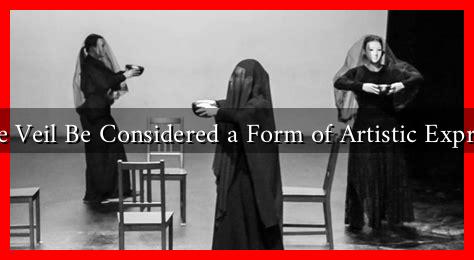-
Table of Contents
Can the Veil Be Considered a Form of Artistic Expression?
The veil, often associated with cultural and religious practices, has sparked debates about its role in society. While some view it as a symbol of oppression, others argue that it can serve as a powerful form of artistic expression. This article explores the multifaceted nature of the veil, examining its historical significance, contemporary interpretations, and its potential as a medium for artistic expression.
The Historical Context of the Veil
The veil has a rich history that spans various cultures and religions. From the ancient Greeks to modern-day Islamic practices, the veil has been used for different purposes, including modesty, protection, and social status. Understanding this historical context is crucial in appreciating its potential as an art form.
- Ancient Civilizations: In ancient Rome and Greece, veils were worn by women to signify their marital status and social standing.
- Religious Significance: In many religions, including Islam and Christianity, the veil is a symbol of piety and devotion.
- Modern Interpretations: Today, the veil is often reinterpreted in fashion and art, challenging traditional notions of identity and femininity.
The Veil as a Medium of Artistic Expression
In contemporary art, the veil has emerged as a significant medium for exploring themes of identity, gender, and cultural heritage. Artists use the veil to challenge stereotypes and provoke thought, transforming it from a mere garment into a canvas for expression.
Case Studies of Artistic Expression
Several artists have successfully utilized the veil in their work, showcasing its potential as a form of artistic expression:
- Shirin Neshat: An Iranian-American artist, Neshat’s photography and video installations often feature women in veils, exploring themes of gender and cultural identity. Her work challenges Western perceptions of Muslim women and highlights their strength and resilience.
- Yasumasa Morimura: This Japanese artist uses the veil in his self-portraits to explore issues of identity and representation. By donning the veil, Morimura questions the boundaries of cultural appropriation and the fluidity of identity.
- Huda Lutfi: An Egyptian artist, Lutfi incorporates traditional veiling techniques in her mixed-media works, blending contemporary art with cultural heritage. Her pieces often comment on the complexities of modern Egyptian society.
The Veil in Fashion and Popular Culture
The veil has also made its way into the fashion industry, where designers use it to make bold statements about femininity and empowerment. Fashion shows and campaigns often feature veils, challenging conventional beauty standards and promoting diversity.
- Chanel: The iconic fashion house has incorporated veils into its collections, using them to evoke a sense of mystery and elegance.
- Rihanna: In her 2014 CFDA Awards appearance, Rihanna wore a sheer, crystal-embellished gown with a matching veil, sparking discussions about the intersection of fashion and cultural symbolism.
- Modest Fashion Movement: This growing trend celebrates modesty in fashion, often featuring veils and hijabs as stylish and empowering choices for women.
Challenges and Controversies
Despite its potential for artistic expression, the veil remains a contentious topic. Critics argue that it can perpetuate stereotypes and reinforce patriarchal norms. Additionally, the commercialization of the veil in fashion raises questions about cultural appropriation and respect for its significance in various communities.
Conclusion: The Veil as a Complex Symbol
In conclusion, the veil can indeed be considered a form of artistic expression, transcending its traditional roles to become a powerful medium for exploring identity, culture, and gender. Through the works of various artists and its presence in fashion, the veil challenges societal norms and invites dialogue about its meaning in contemporary society. As we continue to navigate the complexities of cultural symbols, it is essential to approach the veil with an open mind, recognizing its potential to inspire creativity and provoke thought.
For further reading on the intersection of art and cultural symbols, you can explore resources such as Artsy.

